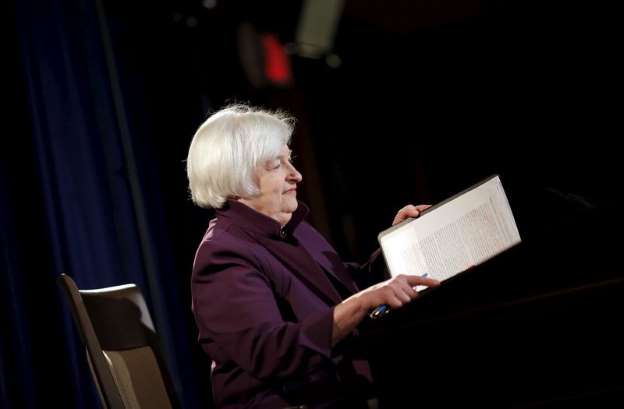
The Federal Reserve says it will depend on straightforward data analysis in deciding when to raise U.S. interest rates.
But whose data will it depend on?
The large, half a percentage point revision to estimated U.S. first quarter gross domestic product issued on Wednesday by the Bureau of Economic Analysis nearly erased a contraction in output that had unnerved policymakers.
In particular it found that exporters and consumers did better than initially thought. The BEA now says GDP shrank only 0.2 percent over the first three months of the year, not 0.7 percent.
The revision may not change the Fed’s policy path, or greatly alter the economic outlook that central bankers just published last week but that’s only because the consensus about how to measure U.S. economic growth has begun to fracture.
There are competing views amongst Fed, BEA and private sector economists on the statistical methodology, particularly over such issues as seasonal adjustment, that have led to mistrust of the data.
As a result, the Fed’s policy of “data dependence” may turn out to involve a good bit of guesstimating, with each Fed official playing their own hunch about where the economyreally stands.
“We don’t measure GDP particularly well over short periods of time. It is very difficult. If you dig into it you will see there are just a lot of extremely difficult calls,” Fed governor Jerome Powell said at a public appearance on Tuesday.
Later on Tuesday, Atlanta Federal Reserve research chief Dave Altig in a public webcast said he thought the BEA’s estimates misstated growth by as much as half a percentage point because of problems with its statistical model.
MAYBE, PROBABLY
Researchers at the Federal Reserve board in Washington D.C., the New York Fed, and the San Francisco Fed have published competing papers in recent weeks looking at whether the BEA’s methods for seasonal adjustment are creating consistent errors in the GDP estimates. Seasonal adjustment attempts to smooth the predictable effects of holidays, vacations, bad weather and other factors out of the data to identify an underlying or longer term trend.
The answer: maybe. Probably. They each had different conclusions. The BEA has agreed there may in fact be a problem and is studying how to revise its seasonal adjustment methods.
For 2015, at least, the revisions in first quarter economic growth have been far larger than normal, according to historical BEA data, jumping from an initial estimate of growth of 0.2 percent, to a contraction of 0.7 percent, and finally on Wednesday to a much smaller 0.2 percent contraction.
Meanwhile, Fed officials have already gone their own way.
John Williams, president of the San Francisco Fed, for example has chosen to stick with his own staff estimates that the economy not only did not shrink in the first quarter, but probably grew about 1.5 percent.
At her press conference last week, Fed Chair Janet Yellen said that GDP “looks to have changed little” in the first quarter, a view that differed then from the BEA’s estimate and also from the more positive calculation of the San Francisco Fed.
“They expected these revisions given the incoming data flow,” said Michael Gapen, head of U.S. economic research at Barclays. “I do not believe this data alters their view on the outlook or the path of monetary policy.”
Fed staff routinely perform their own forecasts, and try to reconcile any glaring differences between major agencies like the BEA and the Fed’s internal economic models.
It’s not only GDP that is afflicted with the seasonal measurement problem. A recent Fed paper suggest some measures of inflation are as well.
Fed governor Powell and others, including Fed vice chair Stanley Fischer, have said the result is that they pay more attention to the unemployment rate as the better statistic for measuring economic strength.
Assuming, of course, that models of the labor market work. As Powell noted, estimating full employment is not foolproof.
“It is not clear where the natural rate is,” Powell said. “The uncertainty band around estimates of the natural rate are famously, extremely wide…We are just not going to know.”
Written by Howard Schneider and Ann Saphir of Reuters
(Source: Reuters)
